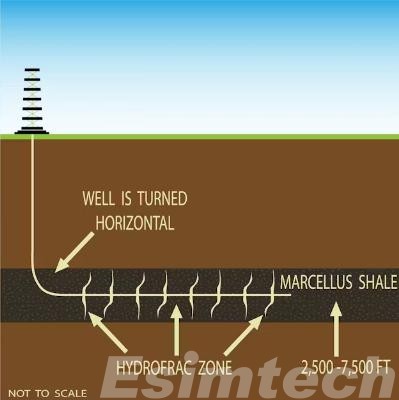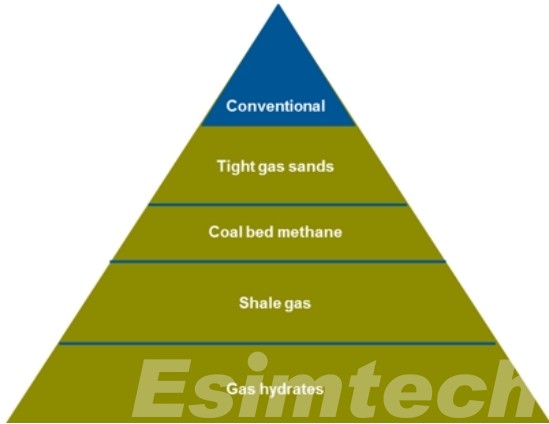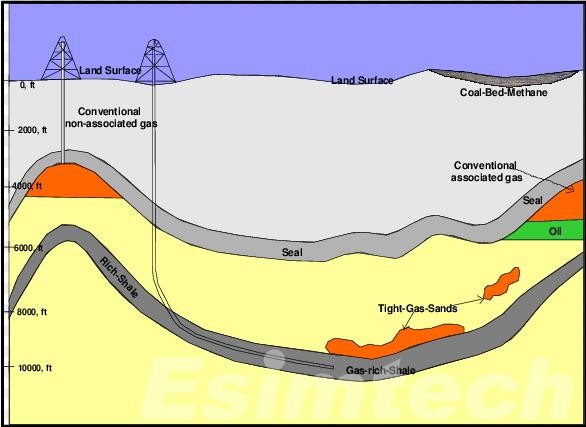Well Control for Unconventional Resources
The oil and gas industry has witnessed a dramatic shift with the rise of unconventional resources like shale and tight oil. These formations hold immense potential, but unlocking them presents unique challenges, particularly in well control. Unlike their conventional counterparts with predictable characteristics, unconventional formations are a labyrinth of complexities. This article delves into the unconventional challenge of well control, explores customized approaches to address it, and examines the emerging technologies shaping the future of well control in this new frontier.
The Unconventional Challenge in Well Control
The unconventional oil and gas revolution has unlocked vast reserves, but it’s not without its complexities. These resources often reside in formations with unique geological characteristics that pose distinct challenges for well control. Let’s delve deeper into the specific hurdles that unconventional well control presents.

1. The Labyrinthine Wellbore
- Horizontal Reaches: Unlike their conventional counterparts drilled vertically straight down, unconventional wells often take a horizontal turn. These extended wellbores can stretch for miles within the target formation. This vastly increases the wellbore’s surface area in contact with the rock, creating a larger potential entry point for formation fluids if wellbore integrity is compromised.
- Fracture Networks: Unconventional formations, like shale gas reservoirs, are often naturally fractured. These fractures can act as a network of hidden pathways, allowing formation fluids like water or gas to readily migrate and potentially enter the wellbore unexpectedly. This makes well control more challenging as unplanned fluid influx can occur quickly and from unforeseen locations within the formation.
2. The Deceptive Kick
Kicks, a sudden influx of formation fluids into the wellbore, are a well-control nightmare. However, in unconventional formations, kicks can be particularly deceptive:
- Delayed Detection: Traditional kick detection methods, like monitoring wellbore pressure changes, may not be as sensitive in horizontal wells. This is because the extended wellbore can dampen pressure fluctuations, potentially delaying the detection of a kick until it becomes more serious.
- Flow Dynamics Enigma: The complex flow dynamics within fractured formations make it difficult to accurately predict the behavior of an influx. Unlike a conventional well where the influx originates from a single, well-defined point, fluid migration in fractured formations can be more diffuse and unpredictable. This makes it challenging to assess the severity of the kick and determine the appropriate well-control response.
3. The Pressure Balancing Act
Maintaining wellbore pressure is a critical aspect of well control. However, in unconventional wells, this becomes an even more delicate balancing act:
- Increased Exposure: The extended horizontal wellbore increases the well’s exposure to the formation pressure. This creates a greater risk of wellbore collapse if the pressure within the wellbore is significantly lower than the formation pressure. Conversely, excessively high wellbore pressure can also pose risks, such as fracturing the formation or inducing losses of drilling fluids.
- Fracture Complications: The presence of fractures adds another layer of complexity to pressure management. Fractures can act as conduits for formation fluids to bypass wellbore pressure control measures, making it challenging to maintain a stable pressure profile throughout the wellbore.
These unconventional challenges require a shift in well-control practices, demanding a more customized and proactive approach to ensure safe and efficient operations in the pursuit of these valuable resources.

A Customized Approach for the Well Control Challenges
Unconventional resources present a unique set of well control challenges due to the complex geological nature of these formations. A one-size-fits-all approach simply won’t do. Here’s a closer look at the customized strategies employed to ensure well control during drilling, completion, and production phases:
1. Pre-Drill Planning
Before the drill bit even touches the ground, meticulous planning lays the foundation for successful well control. Here’s what this pre-drill planning entails:
- Geological Characterization: A thorough understanding of the target formation is paramount. Geologists analyze data from seismic surveys, well logs, and core samples to map out the formation’s structure, identify potential faults and fractures, and determine the distribution of fluids within the rock. This information is crucial for predicting wellbore stability and potential pressure variations.
- Wellbore Stability Analysis: Based on the geological characterization, engineers conduct wellbore stability analysis. This analysis considers factors like rock strength, formation pressure, and drilling fluid properties to predict the likelihood of wellbore collapse or formation fluid influx. The analysis helps in selecting appropriate drilling fluids and wellbore strengthening techniques.
2. Real-Time Monitoring
Traditional kick detection methods, which rely on surface pressure and flow rate measurements, may not be as sensitive in unconventional wells due to the complex flow dynamics within fractured formations. Here’s how advanced monitoring systems enhance well control:
- High-Sensitivity Monitoring Systems: These systems utilize specialized downhole sensors that provide real-time data on pressure, temperature, and flow rate fluctuations within the wellbore. This increased sensitivity allows for earlier detection of even subtle changes that could indicate a kick or wellbore instability.
- Early Warning Systems: Advanced monitoring systems can be programmed with specific thresholds for pressure and flow rate variations. When these thresholds are breached, the system triggers an immediate alert, allowing the crew to react promptly and initiate well control procedures.
3. Managed Pressure Drilling (MPD)
In highly fractured formations, maintaining wellbore pressure becomes especially critical. Here’s where Managed Pressure Drilling (MPD) comes into play:
- Precise Bottomhole Pressure Control: MPD utilizes a closed-loop system that continuously monitors downhole pressure and automatically adjusts the pressure exerted by the drilling fluid. This allows for the precise control of the pressure differential between the wellbore and the formation, mitigating the risk of wellbore collapse and uncontrolled fluid influx.
- Real-Time Adjustments: MPD enables real-time adjustments to drilling parameters like pump rate and choke settings based on downhole pressure readings. This proactive approach helps to maintain wellbore stability and prevent kicks in challenging formations.
4. Closed-Loop Systems
Closed-loop systems go a step further by automating well control responses:
- Data-Driven Automation: These systems are integrated with the real-time monitoring systems and well control equipment. They continuously analyze downhole data and automatically adjust drilling parameters or activate well control procedures based on pre-defined protocols. This automation reduces human error and ensures a faster response time in case of an influx event.
5. Wellbore Strengthening Techniques
In some cases, additional measures are needed to bolster the integrity of the wellbore and prevent fluid influx:
- Specialized Drilling Fluids: Drilling fluids with specific properties, such as high viscosity or formation-plugging additives, can be used to create a stronger hydrostatic pressure barrier against formation fluids and enhance wellbore stability.
- Cementing Liners: Installing a strong cement liner along the wellbore can significantly improve its integrity, particularly in highly fractured zones. This reduces the risk of wellbore collapse and provides a more robust barrier against fluid influx.
By implementing this combination of customized well control practices, the oil and gas industry can navigate the complexities of unconventional formations and ensure the safe and efficient development of these valuable resources.

Technological Advancements in Unconventional Well Control
The unconventional oil and gas boom has spurred a wave of innovation in well control technologies. These advancements are crucial for mitigating the unique challenges posed by unconventional formations and ensuring safe and efficient operations. Let’s delve deeper into some of these cutting-edge technologies:
1. Advanced Logging Tools
Traditional well logging tools provided valuable information about the formation, but they often lacked the detail needed for comprehensive wellbore stability analysis in unconventional plays. Here’s where advanced logging tools come in:
- Image Logging: These tools create high-resolution images of the wellbore wall, revealing details of fractures, faults, and formation heterogeneity. This information is critical for identifying potential weaknesses and planning wellbore strengthening techniques.
- Nuclear Magnetic Resonance (NMR) Logging: NMR logging provides insights into the pore structure and fluid distribution within the formation. This information is crucial for understanding potential pressure variations and designing strategies to manage wellbore pressure effectively.
2. Real-Time Pore Pressure Prediction
One of the biggest challenges in unconventional well control is predicting pore pressure variations within the formation. These variations can trigger wellbore instability or lead to kicks. Emerging technologies are addressing this challenge:
- Geomechanics Modeling: Advanced software utilizes data from various logging tools and wellbore pressure measurements to create real-time geomechanical models. These models predict pore pressure variations based on the ongoing drilling process, allowing for proactive adjustments to drilling parameters and wellbore pressure management.
- Real-Time Pressure While Drilling (PWTD) Tools: These advanced tools measure formation pressure directly while drilling. This real-time data feeds into the geomechanical models, enhancing the accuracy of pore pressure predictions and enabling even more precise wellbore pressure control.

3. Automated Well Control Systems
Human error is a significant factor in well control incidents. Automated well control systems are being developed to address this issue:
- Kick Detection and Analysis Systems: These systems continuously analyze real-time data from downhole sensors, including pressure, flow rate, and mud properties. They are programmed to identify potential kicks with higher sensitivity and speed compared to traditional methods, allowing for a faster and more effective response.
- Automated Shut-In Systems: Once a kick is detected, these automated systems can trigger the well shut-in procedure, closing the wellbore and stopping the influx of formation fluids. This faster response time minimizes the risk of uncontrolled flow and potential wellbore damage.
4. Closed-Loop Drilling Systems
Closed-loop drilling systems represent the pinnacle of automation in well control. These systems integrate various downhole sensors, real-time data analysis software, and automated control mechanisms to create a dynamic feedback loop:
- Real-Time Data Acquisition: Sensors continuously monitor downhole parameters like pressure, flow rate, and drilling parameters.
- Automated Data Analysis: Advanced software analyzes this data in real-time, identifying potential wellbore stability issues or early signs of kicks.
- Automated Response: Based on the analysis, the system automatically adjusts drilling parameters such as pump rate, mud weight, or bottomhole pressure. This proactive approach helps to maintain wellbore stability and prevent well control incidents before they occur.
These advancements in well control technology are transforming the way unconventional resources are developed. By providing greater visibility into the complexities of unconventional formations, enabling real-time decision-making, and automating critical responses, these technologies are paving the way for a safer and more efficient future for unconventional well control.
Conclusion
Well control in unconventional plays demands a shift from traditional practices to a customized and technology-driven approach. By understanding the unique challenges posed by unconventional formations, implementing tailored well control strategies, and utilizing emerging technologies, the oil and gas industry can navigate the unconventional landscape with greater control and safety. This ensures the responsible development of these valuable resources while protecting the environment and personnel.
